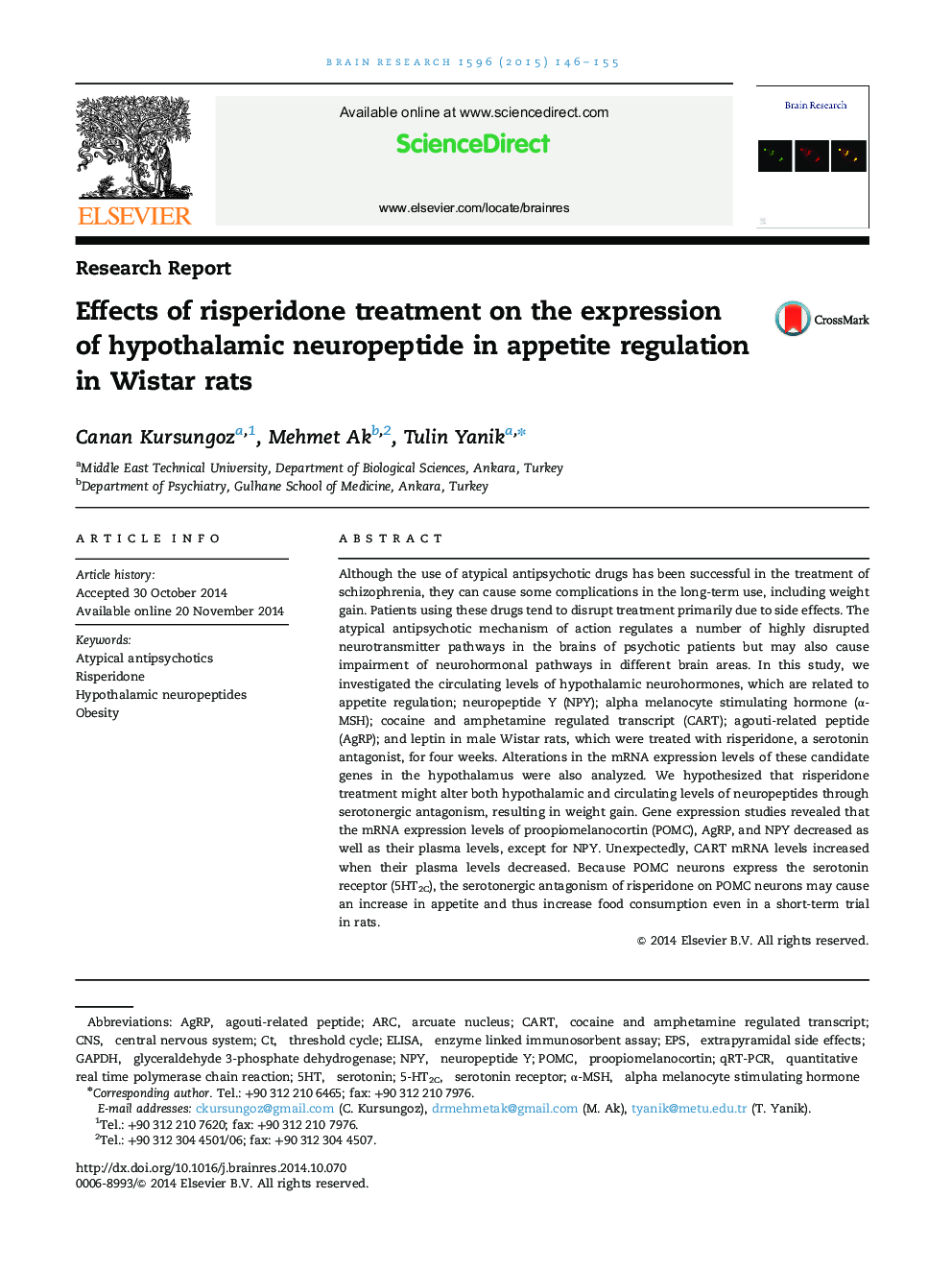| Article ID | Journal | Published Year | Pages | File Type |
|---|---|---|---|---|
| 4323985 | Brain Research | 2015 | 10 Pages |
•Four-week risperidone treatment increased food intake and body weight in rats.•Hypothalamic mRNA/plasma levels of POMC, AgRP and NPY decreased in treated rats.•Hypothalamic CART mRNA expression increased while the plasma levels decreased.•Changes of the neuropeptides levels could be a key for rats' increased appetite.
Although the use of atypical antipsychotic drugs has been successful in the treatment of schizophrenia, they can cause some complications in the long-term use, including weight gain. Patients using these drugs tend to disrupt treatment primarily due to side effects. The atypical antipsychotic mechanism of action regulates a number of highly disrupted neurotransmitter pathways in the brains of psychotic patients but may also cause impairment of neurohormonal pathways in different brain areas. In this study, we investigated the circulating levels of hypothalamic neurohormones, which are related to appetite regulation; neuropeptide Y (NPY); alpha melanocyte stimulating hormone (α-MSH); cocaine and amphetamine regulated transcript (CART); agouti-related peptide (AgRP); and leptin in male Wistar rats, which were treated with risperidone, a serotonin antagonist, for four weeks. Alterations in the mRNA expression levels of these candidate genes in the hypothalamus were also analyzed. We hypothesized that risperidone treatment might alter both hypothalamic and circulating levels of neuropeptides through serotonergic antagonism, resulting in weight gain. Gene expression studies revealed that the mRNA expression levels of proopiomelanocortin (POMC), AgRP, and NPY decreased as well as their plasma levels, except for NPY. Unexpectedly, CART mRNA levels increased when their plasma levels decreased. Because POMC neurons express the serotonin receptor (5HT2C), the serotonergic antagonism of risperidone on POMC neurons may cause an increase in appetite and thus increase food consumption even in a short-term trial in rats.
Graphical abstractFigure optionsDownload full-size imageDownload high-quality image (244 K)Download as PowerPoint slide
